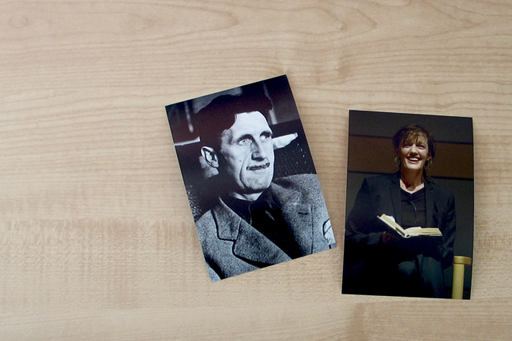1.4.2 Reading characters

Reading other novels and stories to see how characters appear is one of the most essential preparations you can undertake.
Take a look at these character sketches from George Orwell’s Burmese Days and Zoë Heller’s Notes on a Scandal. Note down how you think the writers are managing to portray character. The extracts are also available as a PDF [Tip: hold Ctrl and click a link to open it in a new tab. (Hide tip)] for your convenience.
The first thing that one noticed in Flory was a hideous birthmark stretching in a ragged crescent down his left cheek, from the eye to the corner of the mouth. Seen from the left side his face had a battered, woe-begone look, as though the birthmark had been a bruise – for it was a dark blue in colour. He was quite aware of its hideousness. And at all times, when he was not alone, there was a sidelongness about his movements, as he manoeuvred constantly to keep the birthmark out of sight.
The first time I ever saw Sheba was on a Monday morning, early in the winter term of 1996. I was standing in the St George’s car park, getting books out of the back of my car when she came through the gates on a bicycle – an old-fashioned, butcher-boy model with a basket in the front. Her hair was arranged in one of those artfully dishevelled up-dos: a lot of stray tendrils framing her jaw, and something like a chopstick piercing a rough bun at the back. It was the sort of hairstyle that film actresses wear when they’re playing sexy lady doctors. I can’t recall exactly what she had on. Sheba’s outfits tend to be very complicated – lots of floaty layers. I know she was wearing purple shoes. And there was definitely a long skirt involved, because I remember thinking that it was in imminent danger of becoming entangled in her spokes. When she dismounted – with a lithe, rather irritating, little skip – I saw that the skirt was made of some diaphanous material. Fey was the word that swam into my mind. Fey person, I thought. Then I locked my car and walked away.
My formal introduction to Sheba took place later the same day when Ted Mawson, the deputy head, brought her into the staffroom at afternoon break for a ‘meet and greet’.
I was off in a far corner when Mawson ushered Sheba in, so I was able to watch their slow progress around the room for several minutes, before having to mould my face into the appropriate smile.
Sheba’s hair had become more chaotic since the morning. The loose tendrils had graduated to hanks and where it was meant to be smooth and pulled back, tiny, fuzzy sprigs had reared up, creating a sort of corona around her scalp. She was a very thin woman, I saw now. As she bent to shake the hands of seated staff members, her body seemed to fold in half at the waist like a piece of paper.
‘Our new pottery teacher!’ Mr Mawson was bellowing with his customary, chilling good spirits, as he and Sheba loomed over Antonia Robinson, one of our Eng Lit women. Sheba smiled and patted her hair.
Pottery. I repeated the word quietly to myself. It was too perfect: I pictured her, the dreamy maiden poised at her wheel, massaging tastefully mottled milk jugs into being.
